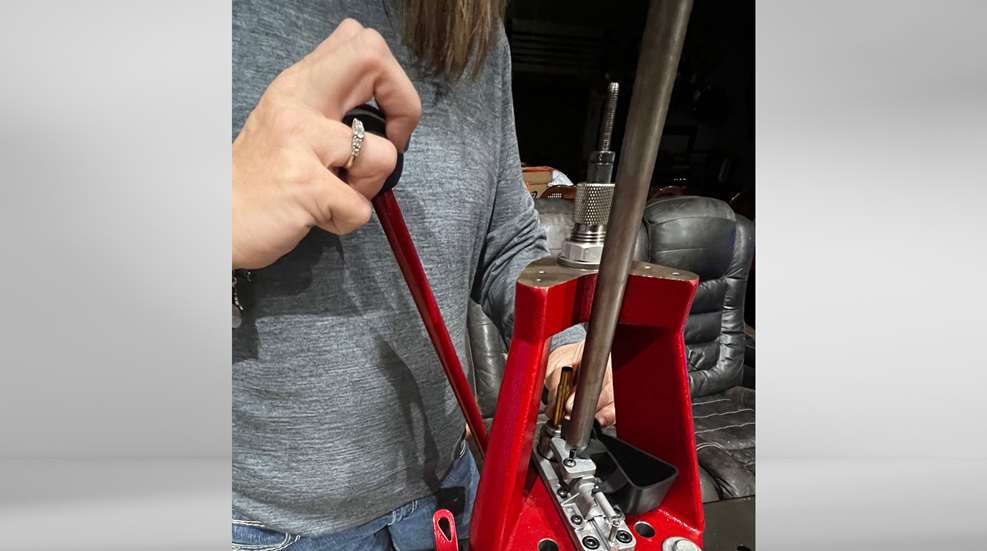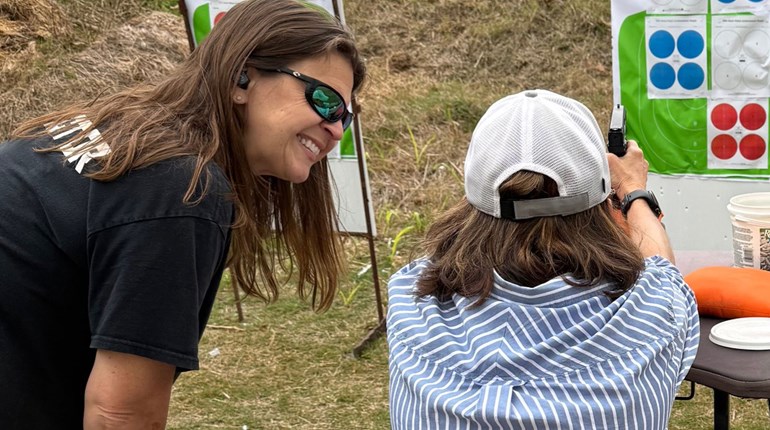
If you like to shoot, reloading can become a money-saving hobby. There are four components that make up a pistol or rifle cartridge: the case (brass), primer, powder and bullet. Of these four components, the primer, powder, and bullet must be new if you plan to reload. The case, however, can be re-used (“spent” or already shot) if it is in good shape and not showing signs of case or brass deterioration.
By reusing good casings, you can save between 40 percent and 60 percent of the cost of ammo, depending on the caliber that you are reloading. The more used casings or brass that you have, the more money you can save, and this results in more shooting opportunities for less money.

Collecting Brass
The easiest way to collect brass for reloading is to retain the brass case after you shoot it. You should be able to reuse/reload brass two or three times before it is not safe to reload another time. The second way to obtain brass is to buy new brass casings from manufacturers. Of course, this adds to the cost of reloading.
The third way to collect brass for reloading is to collect the casings left behind from previous shooters. Some ranges do not allow you to collect brass off the ground so make sure you know the rules of the ranges where you are shooting. The ranges that have this type of rule do so under the guise of safety. Often the ranges themselves collect the brass so they can reload or resell. If you reload, you may opt to only shoot at ranges that allow you to collect discarded brass casings.
The empty brass that you have collected cannot be taken straight to the press and be reloaded. It must be prepped, even if it is brand new brass purchased from the manufacturer. Failing to properly prep your brass can lead to ammunition that will not fit into the firearm’s chamber, which can lead to a dangerous and catastrophic failure—either the destruction of the firearm and/or possible serious bodily injury or death of the shooter and others around them.

Clean the Case
There are several reasons you want to clean your brass before reloading. The first is that the reloading dies are expensive and can be damaged by running uncleaned brass through them. There could be debris or other defects that could damage the reloading die as it passes through and over the case.
Cleaning the brass also removes any oil or other substance that could ruin the primer. Primers can be expensive and hard to come by, especially true if you are looking for large rifle primers. Oil, the nemesis of primers, can destroy a primer very quickly. This is a significant reason why you should never handle primers, and why reloaders use primer trays and primer pickup tubes.
Cleaning the brass allows the reloader to inspect the brass for any cracks, splits or dents. A cleaned brass also reveals bad primer pockets and extractor marks that could cause a cartridge failure. The inspection of the cleaned brass is when the reloader throws the damaged cases away and proceeds with reloading of the cases that pass scrutiny.

Resize and Decap
Once the case has been cleaned, it needs to be resized and decapped, because once a cartridge has been fired, the case expands, and the spent primer is still in the case. Before inserting the case in the resizing and decapping die, it should be lubed on a lubing pad or a lubing spray applied.
Once the case is lubed, it is placed in the shell holder on the reloading ram. When you pull down the lever, the case is pushed through the die, resizing it. At the same time the decapper punches out the spent primer. If the die set you are using has separate dies for resizing and decapping, the case should be run through the decapper first and then it can be resized.
Trim the Case
Once the case has been cleaned, resized and decapped, you may need to trim the case down. This is especially true if it is a necked cartridge that is being reloaded. It is not uncommon for straight wall cartridges such as 9 mm and .45 ACP to fall within acceptable overall case lengths. If the case falls within acceptable measurements, trimming is not necessary.
To determine if a case is too long, use a caliper to get the overall case length measurement. If the case length is too long, it must be trimmed with a case trimmer.

A case trimmer is operated by either a handle for turning, or it can be electric. Place the case in a shell holder on one end of the trimmer. Insert a pilot that matches the neck diameter of the opening into the cutter on the trimmer. Then hold the case horizontally in the trimmer, which will be set to trim a specific depth. The case is then turned in the trimmer, and a thin curl of the case is cut until it is at the set depth. The case is now within the acceptable overall case length measurements.
De-Burr and Chamfer the Case
Once the case has been trimmed, it needs to be prepped to accept the bullet. This is done by de-burring and chamfering the case. Both processes can be performed with handheld devices or an electric de-burr and chamfer tool, which removes the burrs.

Cases need to be de-burred because during the trimming process, sharp burrs appear on the outer edge of the case. The de-burring device is placed inside the case so that the cutting blades are sitting on the outer edge of the case. The de-burring tool is rotated around the edge of the case removing the sharp edges and bumps.
Failing to de-burr a case can affect the seating of the bullet as well as damage internal parts of the firearm such as scoring the feeding ramp. A cartridge that has been trimmed and not de-burred can also lead to feeding issues or stoppages during the cycling process while shooting the firearm.
Chamfering the case is done to give the bullet a steady place to sit before it is set by the seating die. When the case is chamfered, the opening of the neck or the straight wall case is beveled so the bullet sits straight in the opening.
Failing to chamfer a case can result in the bullet sitting at an angle in the opening instead of straight up and down in the case. This will cause feeding issues of the ammunition in the firearm and affect shooting accuracy.
Reloading can be very rewarding, and it can be financially beneficial. These steps can appear overwhelming and complicated, but these steps, with a little bit of research and advice from those who reload, are actually easy to perform. Reloading your own ammunition is simple and safe if you follow all the safety rules. Every avid shooter should give it a try before they discount it. You just may have discovered a new dimension to shooting!















































